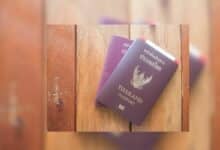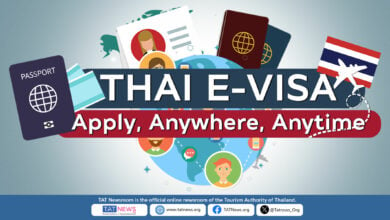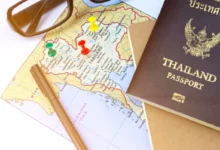Ultimate guide to apply for a Schengen visa from Thailand

Greetings to all aspirational travellers! For those who have envisioned themselves meandering through the quaint streets of Paris, uncovering the ancient marvels of Rome, or engaging in the vibrant markets of Barcelona, procuring a Schengen Visa ought to be prioritized on your agenda. To Thai citizens harbouring a profound desire for European explorations and with aspirations set on these adventures, initiating this process is quintessential for transforming those dreams into reality.
We acknowledge that at initial observation, the application procedure may appear somewhat formidable. However, rest assured! Through insightful advice and methodical guidance, the complexity of the process significantly diminishes. Whether your intentions include indulging in leisurely pursuits, immersing yourself in novel cultures, or perhaps experiencing a touch of romance beneath the European skies—acquiring a Schengen Visa is indispensable for any European journey. This guide aims to navigate you through each step meticulously and ensure your visa application process is met with success. Let us embark on this journey together!
Understanding the fundamental requirements and procedural steps is critical. From gathering required documentation to identifying your main destination or point of entry within Europe, this summary offers detailed insights into applying for a Schengen Visa from Thailand—thus paving the way for a propitious start to your European exploration.
Understanding Schengen visa

What is a Schengen visa?
A Schengen Visa represents a critical avenue to Europe for a wide array of travellers, including those hailing from Thailand. It is designated as a particular type of visa that enables access to 26 European countries, collectively referred to as the Schengen Area. This area functions effectively as a single entity in terms of international travel, with a unified visa policy.
The Schengen Visa falls under the “C” category classification, allowing for stays up to 90 days within any given 180-day period. For individuals planning to visit multiple European nations or concentrate on one specific country, it is essential to understand the process involved in applying for a Schengen Visa from Thailand.
Countries covered by Schengen visa
The Schengen Area encompasses a significant part of Europe but not all European countries. The 26 countries that do fall under this agreement are known for abolishing internal borders, for the ease of movement of people among them. These countries include:
- France
- Germany
- Italy
- Spain
- Sweden
Additionally, four non-European Union states – Iceland, Liechtenstein, Norway, and Switzerland – are participants in this zone. It is critical to highlight that the United Kingdom and Ireland have chosen not to partake in the Schengen Agreement. Consequently, for individuals intending to travel to Europe, understanding which countries can be entered with a Schengen Visa is crucial for effective travel planning.
Types of Schengen visas
When planning your trip to the Schengen Area, it’s essential to choose the correct visa type based on your travel purpose. Here are the main types of Schengen visas available:
1. Tourist visa
A Schengen Tourist Visa is ideal for those who wish to explore the rich cultural heritage, stunning landscapes, and iconic landmarks of Europe. This visa allows you to travel for leisure, sightseeing, and recreational activities within the Schengen Area.
2. Business visa
A Schengen Business Visa is designed for professionals attending business meetings, conferences, trade fairs, or other business-related activities. This visa facilitates smooth travel for business purposes, enabling you to network, collaborate, and expand your business horizons in Europe.
3. Family visit visa
If you have family or friends residing in the Schengen Area, the Family Visit Visa allows you to visit them. This visa is perfect for family reunions, special occasions, or simply spending quality time with loved ones. It requires an invitation letter from your host.
4. Transit visa
For travellers passing through a Schengen country en route to a non-Schengen destination, the Transit Visa is essential. This visa allows you to transit through one or more Schengen countries without staying for an extended period. It’s crucial for layovers and connecting flights within the Schengen Area.
5. Student visa
A Schengen Student Visa is designed for individuals attending short-term study programs, courses, or training within the Schengen Area. Whether you’re participating in a summer school, language course, or vocational training, this visa enables you to pursue educational opportunities in Europe.
Understanding these visa types and selecting the one that aligns with your travel purpose is crucial for a successful application. Ensure you gather all the required documents and meet the specific criteria for the visa type you are applying for.
The application process for a Schengen visa from Thailand

Initiating a journey to Europe requires a critical step: securing your Schengen Visa. For applicants residing in Thailand, the process is streamlined, provided there is strict compliance with established protocols.
1. Determination of the appropriate Schengen visa type
The initial phase involves selecting the visa category that aligns with your travel objectives. Short-stay visas permit explorations within Schengen countries for a duration of up to 90 days within six months. This option is suitable for purposes including tourism, brief business engagements, or familial visits. Should your travel plans require longer durations or involve activities such as education or employment, alternative visa types may be more appropriate. Accurate selection constitutes the foundational step towards a successful visa application process.
2. Gather necessary documents
Accumulating the right documents is key. Your checklist should include:
A completed visa application form. Accuracy here is non-negotiable.
Your passport must be valid for at least three months beyond your intended stay.
Recent photographs that comply with Schengen requirements.
Proof of financial means. Bank statements or a sponsorship letter can demonstrate you can support yourself during your visit.
Travel itinerary and hotel bookings or accommodation proof.
Travel insurance that meets Schengen standards, covering medical expenses and repatriation.
Employment or student status evidence, if applicable.
Document requirements may vary based on your specific circumstances and the embassy’s current policies. It’s imperative to check the most recent guidelines from the embassy of the country you intend to visit.
3. Submitting the application
Once your documents are in order, submit your application at the designated application centre or embassy. In Thailand, applications often go through external service providers appointed by Schengen countries, such as TLS Contact for France. Booking an appointment is usually the first step.
At the centre, you’ll undergo a brief interview, submit your documentation, and provide biometric data if needed. It’s essential to adhere to the rules set by the centre, including restrictions on cell phone use and security checks.
Fees are an integral part of the visa application process. They vary depending on the visa type and the applicant’s age. However, you should expect to pay in Thai Baht, equivalent to the euro rate. It’s important to remember that visa fees are non-refundable, even if your application is unsuccessful.
Applying for a Schengen Visa from Thailand demands detailed attention. Nevertheless, it is entirely feasible. First and foremost, selecting the appropriate visa category is crucial. Moreover, compiling all requisite documents is essential. Additionally, having a comprehensive grasp of the application submission process is vital. With these steps in place, applicants are well-positioned to commence their exploration of Europe’s diverse cultural landscape. Adequate preparation, therefore, can markedly improve the likelihood of visa approval. Consequently, this facilitates an unparalleled experience of European travel.
4. Interview and biometrics
Following meticulous preparation and compilation of all necessary documentation, the subsequent phase involves attending an interview and undergoing biometric data collection at the specified centre. This stage presents a critical opportunity to substantiate your intent to visit the Schengen area.
Through diligent preparation and a thorough comprehension of the procedural requirements, individuals are well-positioned to embark on their European journey. Ultimately, we wish you safe travels in your forthcoming European endeavour.
The key to a successful Thai visa interview lies in avoiding common pitfalls: lack of preparation, incomplete documentation, providing misleading information, and failing to show proof of return or financial stability. Approach the interview with confidence, honesty, and thorough preparation. Remember, presenting a well-rounded and genuine application is your pathway to securing your visa to Thailand.

































